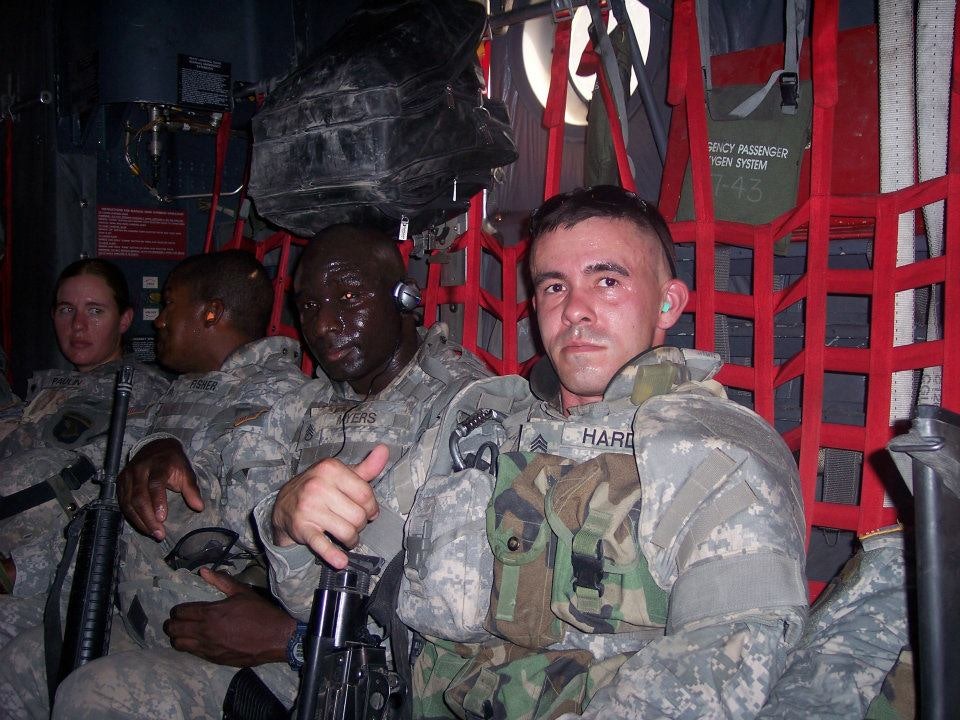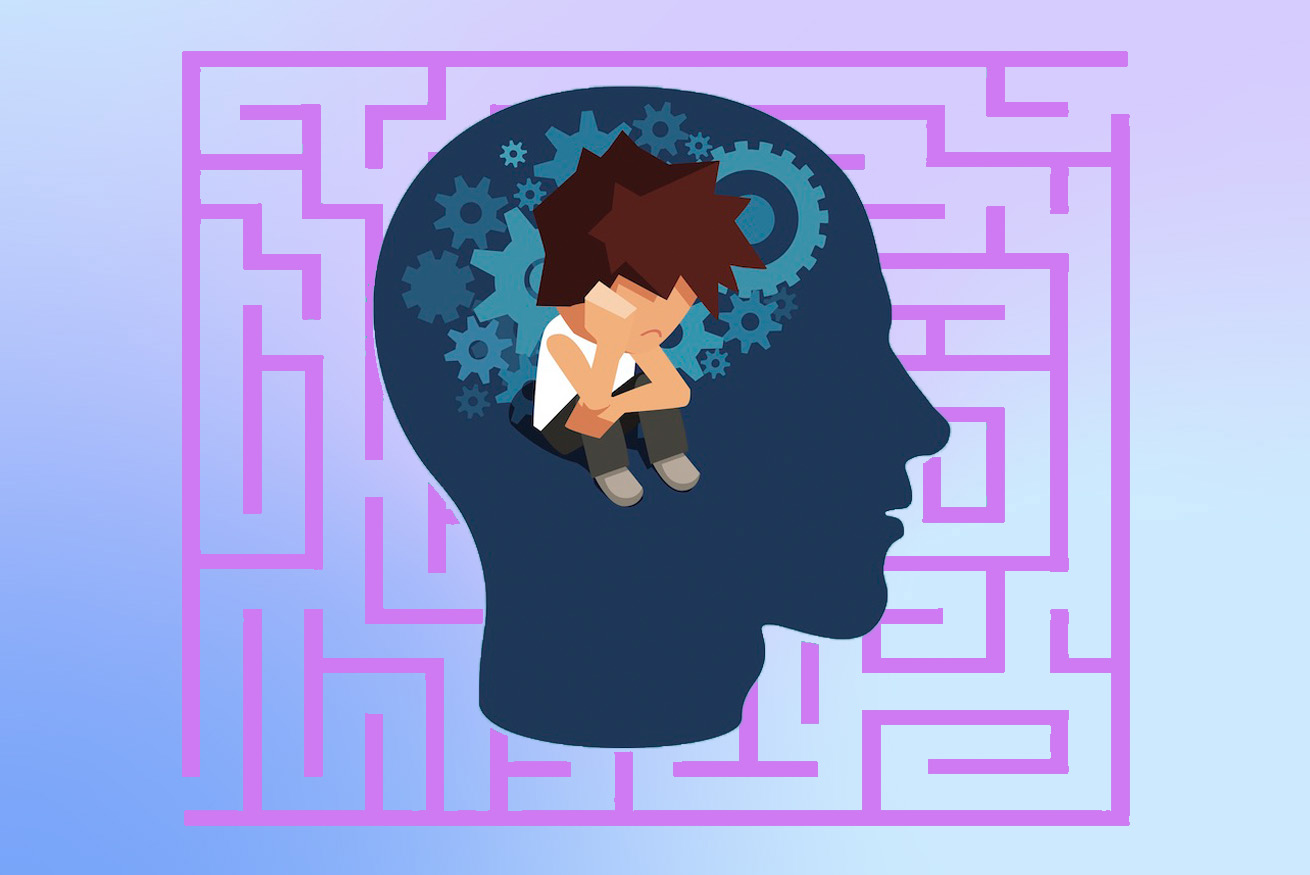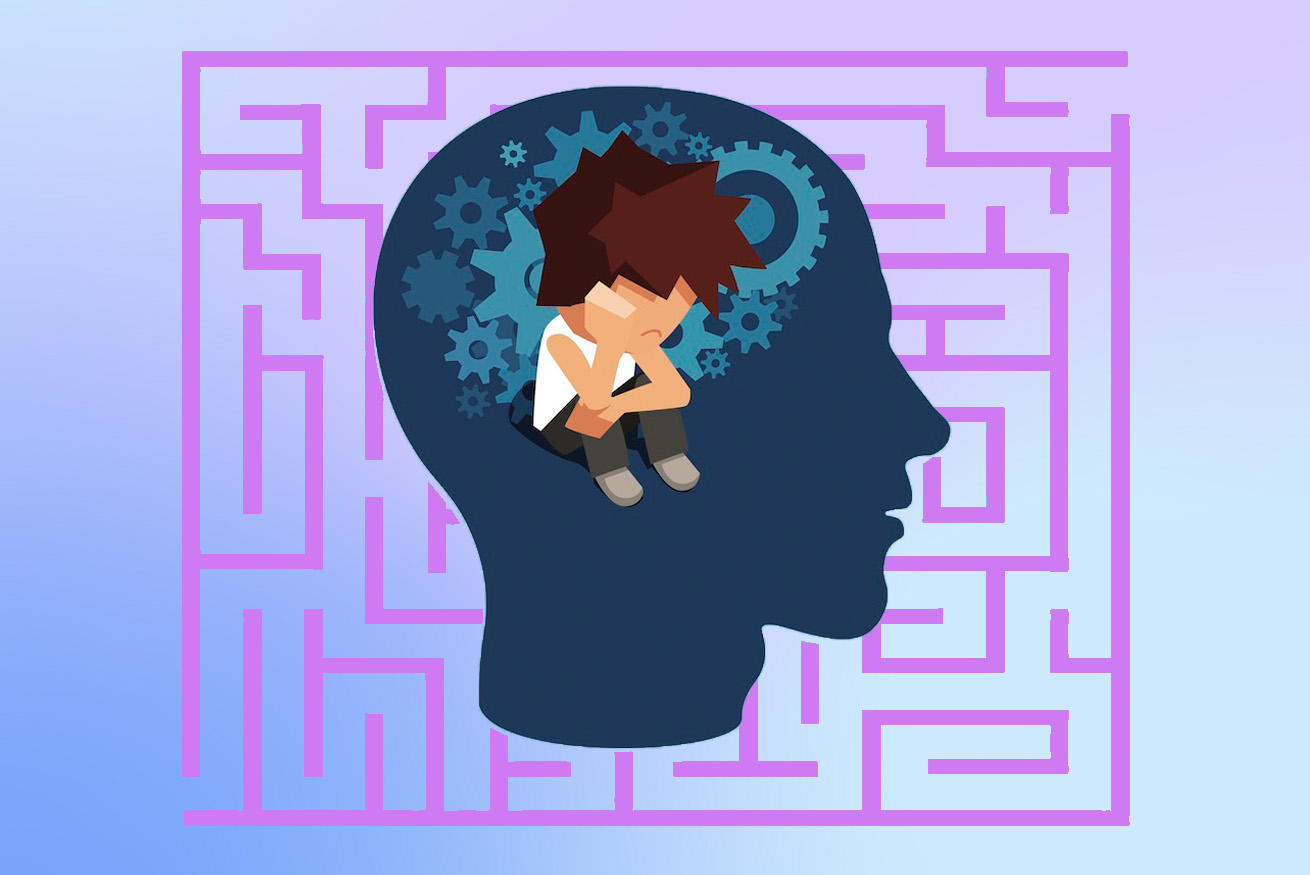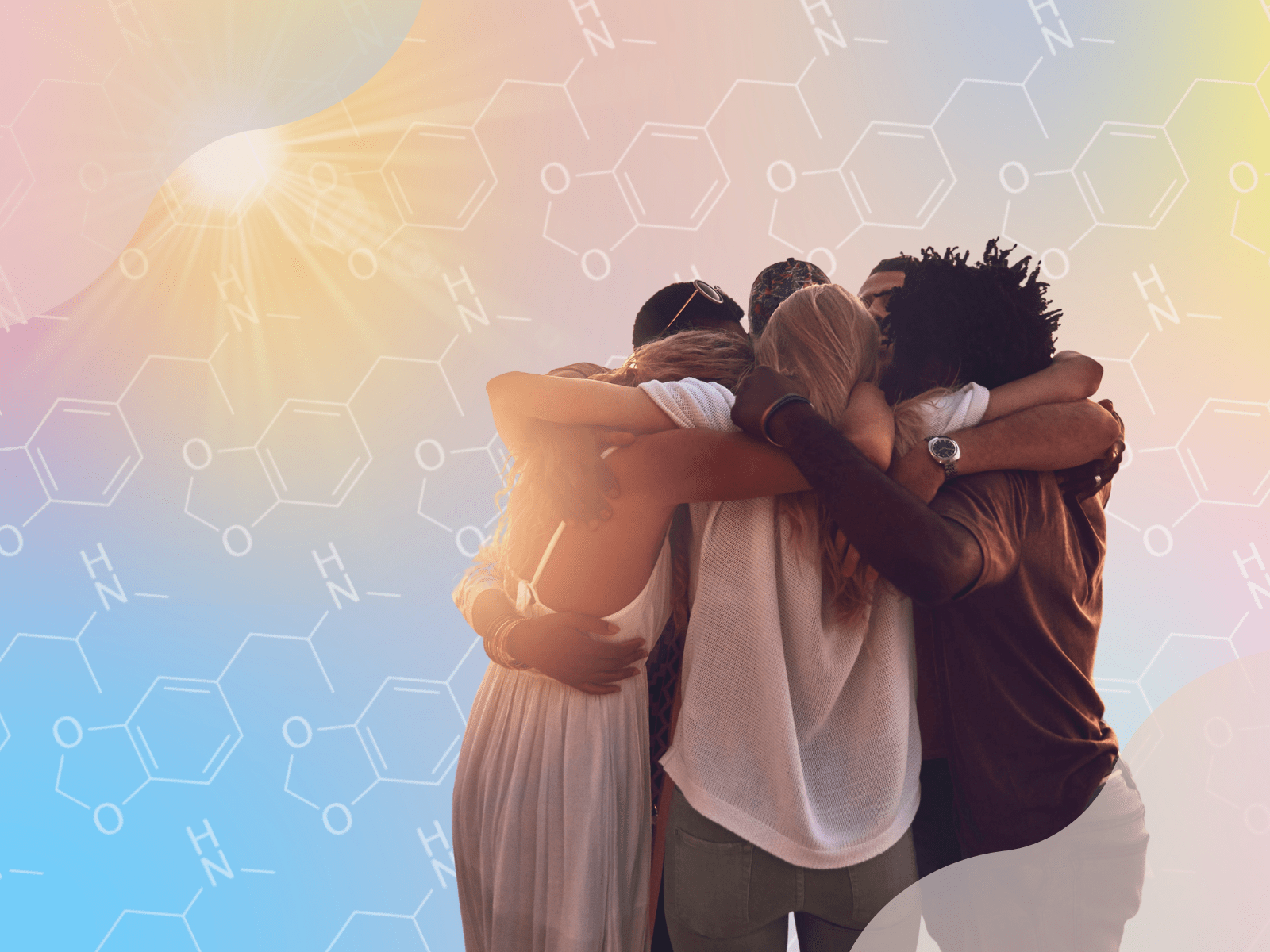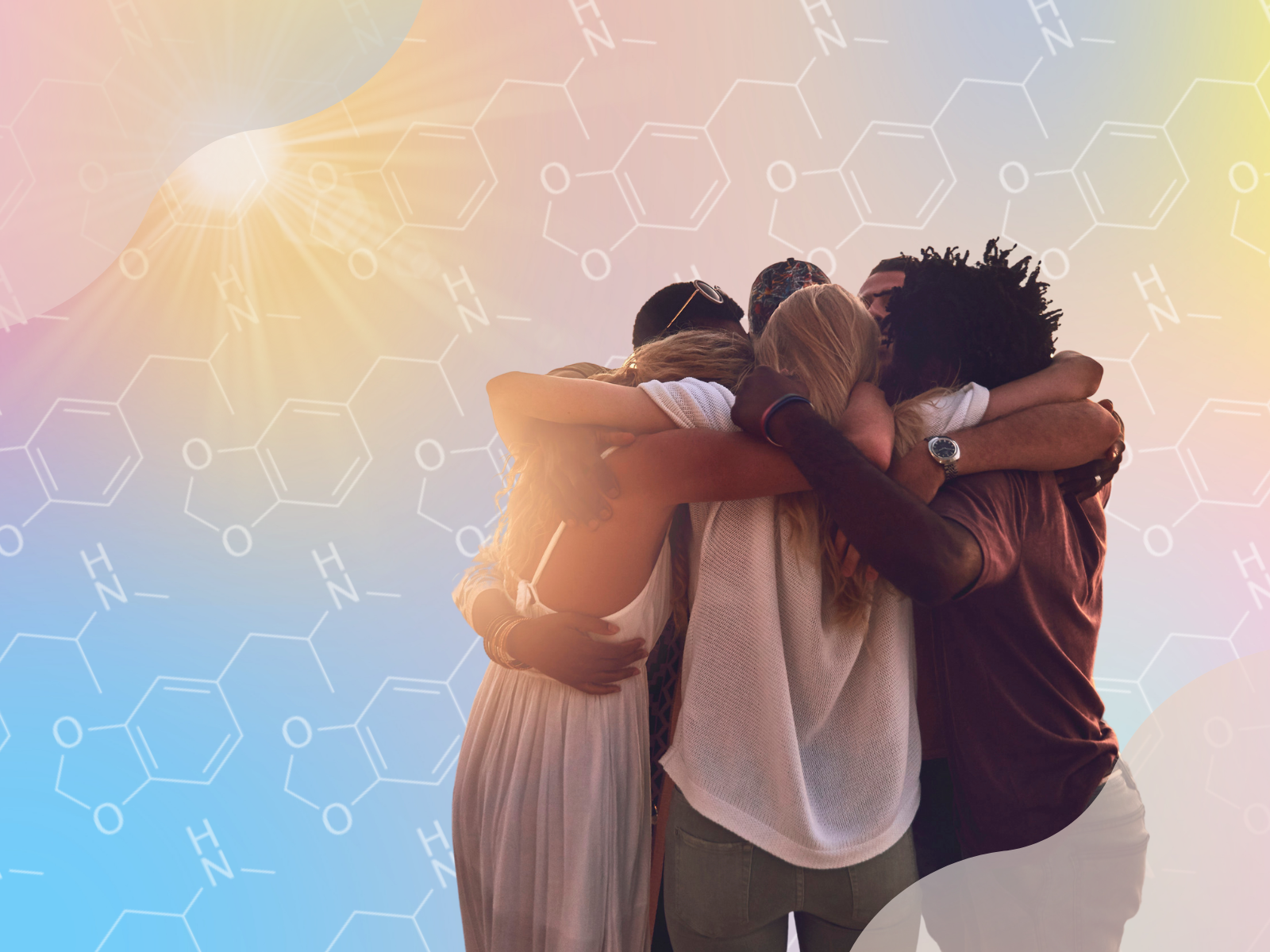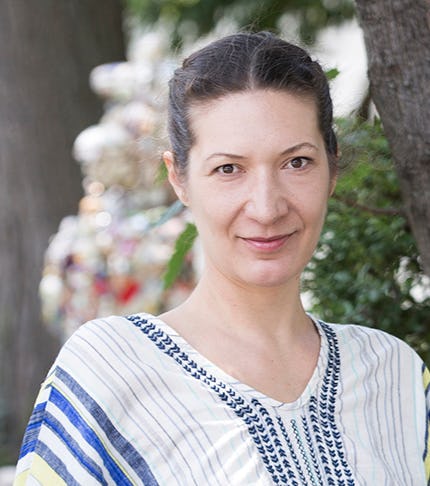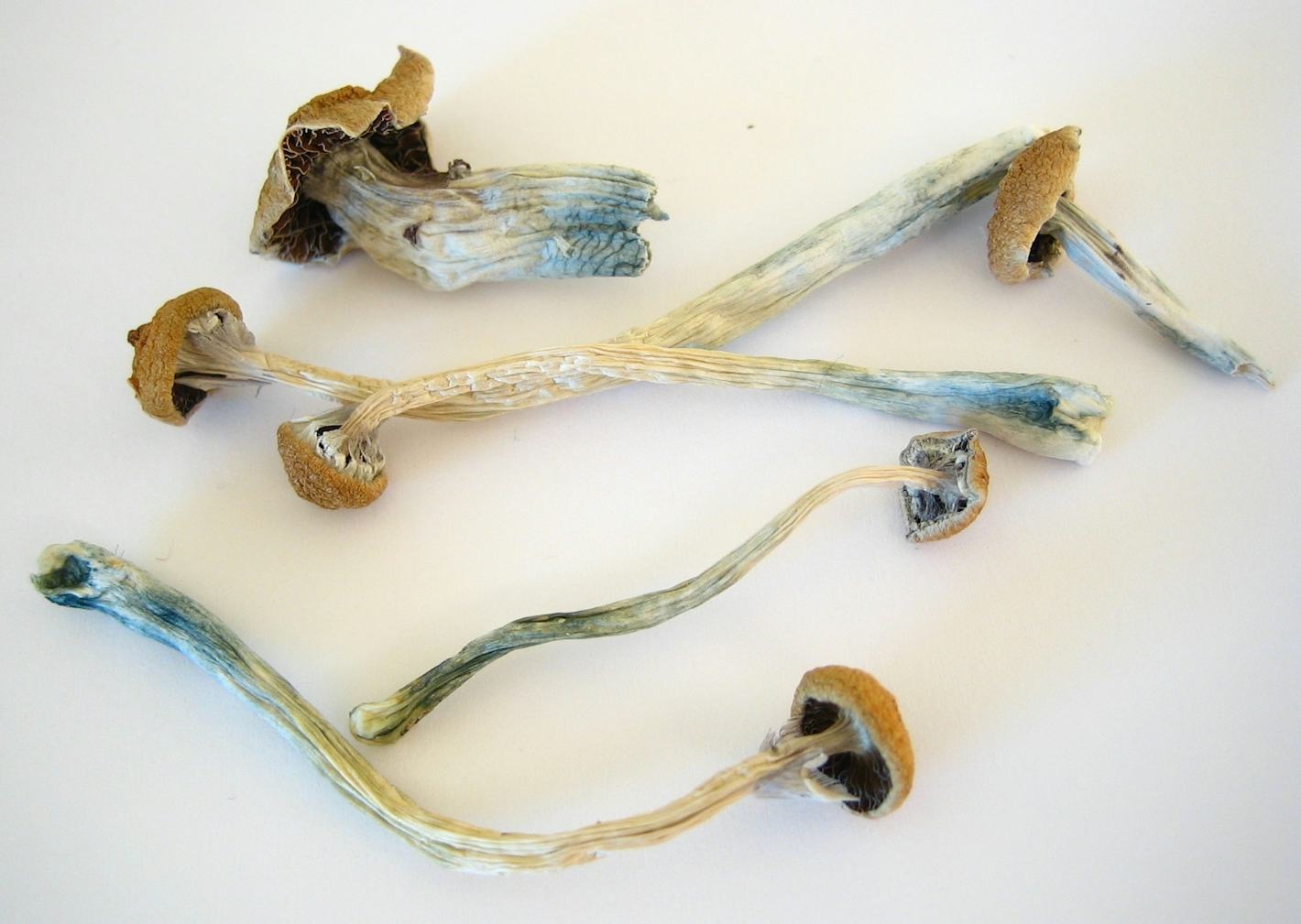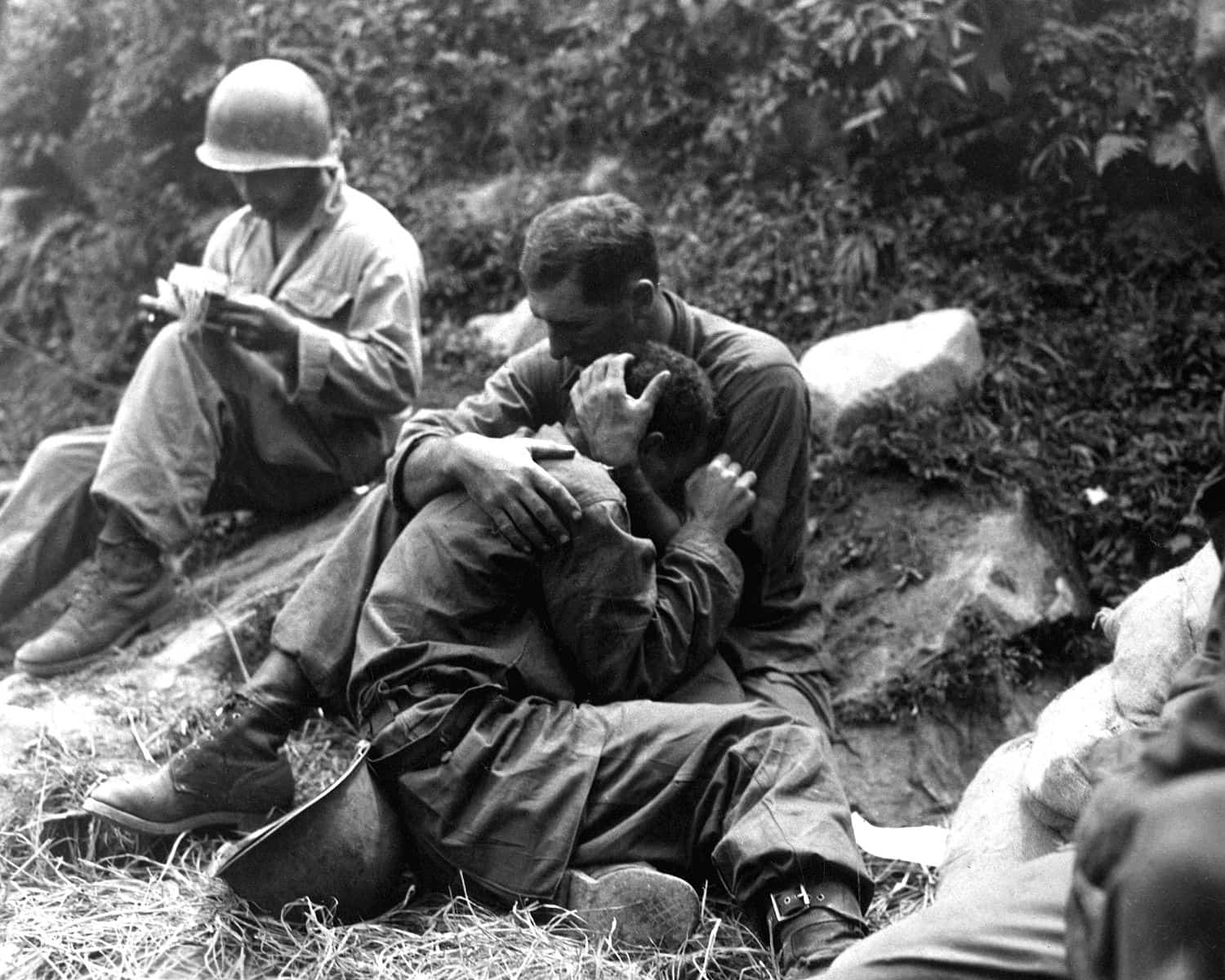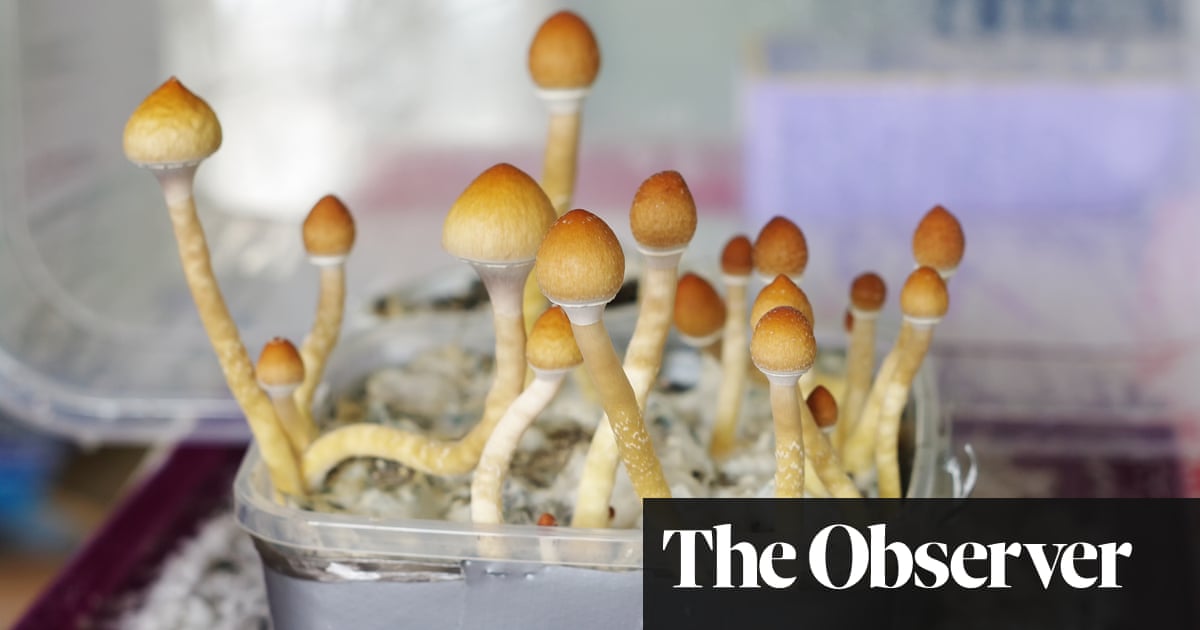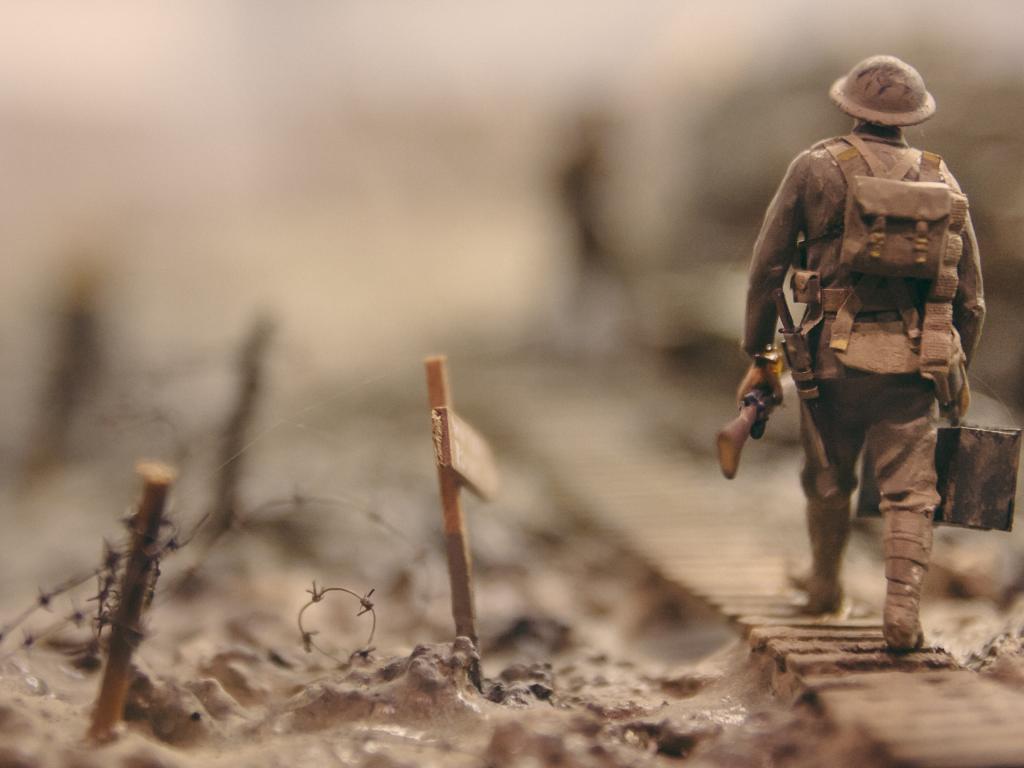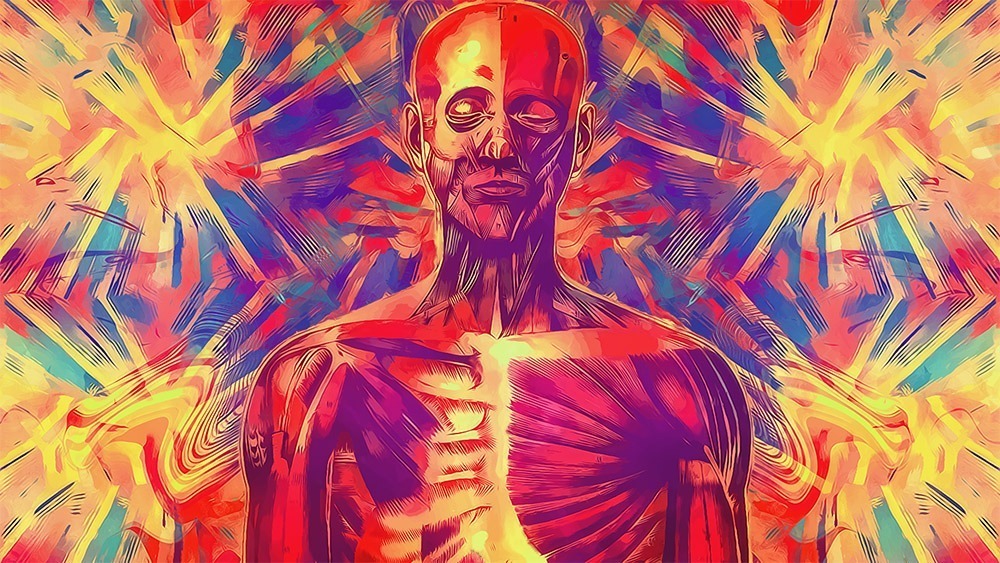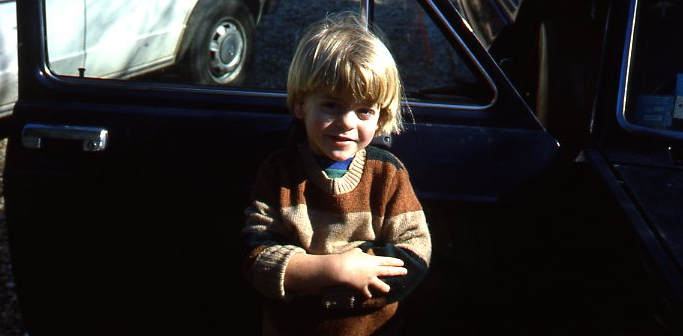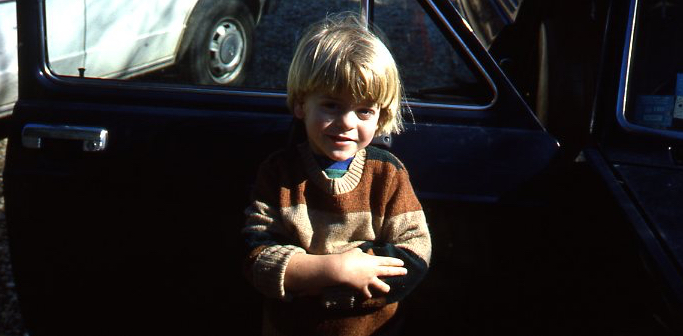My Healing Journey after Childhood Abuse, part 2
by Tim Ferris
Tim Ferriss: I’d like to speak to something you said earlier, which is I think important. At least it has been important for me to unpack, as someone who almost committed suicide in 1999. And that is, you said you didn’t want to die, but you didn’t want to live. And an observation that was drawn for me by Stanislav Grof, who is a psychotherapist, I’m not sure he would consider himself a psychotherapist, I’m not sure what label he would apply, but very experienced psychotherapist who’s supervised thousands of sessions over his 80-plus years of life involving psychotherapy, and also assisted psychotherapy with compounds like LSD and other things. And I’m going to paraphrase this, but he said that a desire to kill oneself can be thought of as a desire to destroy your physical body, but it’s not a desire to destroy your physical body. It’s a desire to kill your ego and to stop the loops that you’re experiencing. It’s a desire, at least for me, desire for some type of relief from the relentless looping of these thought patterns that seemingly would not stop. Just like being in the impact zone in the ocean, where you’re getting hit by wave after wave after wave. I just wanted the waves to stop.
And the only option that I felt was available was to take my own life, which thankfully I did not do. People can hear my TED talk for how that unfolded. But the part that was left out of the TED talk is that I had planned to kill myself. I had the exact plan laid out. I knew exactly how and when I was going to do it. And by sheer luck, I had requested a book dealing with suicide from Firestone Library at Princeton, and I’d forgotten to change my mailing address. I was away from school. I was taking time away from school, which, surprise surprise, was recommended by the administration because they don’t want a suicide on their watch if someone seems mentally unstable. And I had forgotten to change the mailing address to where I was then living off campus.
So a postcard, when the book was available, went home to my parents, and my mom got the postcard. And she called me with a very shaky voice and asked me about it. And that snapped me out of it, because I had only been thinking about really myself and the impact that it would have on me. I was so stuck in my own loops that I had not thought about the impact it would have on other people. And as someone later put to me, killing yourself is like taking your pain times 10 and inflicting it on the people who love you the most.
So that snapped me out of it. But that was so lucky. So lucky. If you think about how that would have turned out differently, now it would have been an email or some type of notification that I would have archived, and I would not be here. So I came very, very close. And at the time, it’s because I viewed the only option for extinguishing a loop was to kill myself. And what I’ve learned since is that it is possible, and I’m not a hammer looking for the nail in the sense that I’m not recommending these tools for everyone. They do not address everything. They have risks, they have side effects. But tools like ketamine, tools like psilocybin, in some cases with trauma, MDMA for PTSD, with qualified facilitators and therapists, allow you to do what I so desperately wanted without killing yourself.
And I want to just emphasize to people, if you feel that you’re fatally flawed in a way that dooms you to unhappiness and self-loathing and a desire to kill yourself, don’t believe everything that you think. Because as I learned later, even though that seemed true in the moment, that is not true. There are tools and options available to you.
Debbie, one thing I’d love to ask you is, are there any books or resources or organizations that you’ve found particularly helpful, or that you’ve recommended to people that they’ve found helpful?
Debbie Millman: Yeah. And Tim, I just want to caveat. I know that I was talking to Roxane about a book that we’ve both been really helped by, and it’s called
The Courage to Heal by Ellen Bass. But I’ve heard since that there’s some problematic issues in that. And I don’t know if it’s because of the way that they talk about trans. I don’t know. So that book was enormously helpful to me, as was Bessel van der Kolk’s books. They still continue to be helpful. And I’m happy to say that separately again, so that it’s good for the podcast, but I don’t know. Let me look into what issues there might be, because I don’t want to give anybody information or recommend a book that’s problematic for any reason.
Tim Ferriss: Yeah. And I’ll also say, we can put any disclaimer in the show notes for people.
The Courage to Heal workbook has also been sent to me. And it was recommended by someone with a lot of in the trenches experience, working with trauma survivors. I will confess that I did not actually have the stomach to go into it because I was coming off six months of very deep, intense work, and just could not even digest the possibility of going through a 200- or 300-page workbook. So I have not cracked it, but it was recommended by someone who I respect tremendously as a clinician. So that’s it, so we can put that in the list.
Debbie Millman: Definitely.
The Drama of the Gifted Child is a book that I also read. As I mentioned earlier, up till I was about 23, 24, I was in this mode of, “This didn’t impact me. I’m not going to let this destroy my life. I’m not going to let him win. This is something I’m going to overcome and have the best possible life for.” And I think a lot of people feel that way. And then everything comes crashing down.
I ended up at a party. It was about a year or two after I graduated college. And somebody that I admired a great deal heard about a job that I had gotten and said to me, “Oh, Debbie, I’m so jealous of you.” And I just stood there and looked at him and thought, how could he possibly be jealous of me? I’m the most disgusting, ugliest, unworthy person on the planet. And that’s when I decided I needed to go into therapy for the first time.
And when I did, the gates opened, they really did. I remember being at the Brooklyn Academy of Music, watching
Einstein on the Beach, and something triggered me in that performance. And I went home and spent two days in bed, just weeping at who I was and what I was in my life. And at that point, really tried every possible, at that point this is the ’80s now. We’re talking about every possible book, workshop, nutritionist, any way that I could find to try to be better, to try to feel better, to try to change who I was. And a lot of it was trying at that time for quick fixes, didn’t want to have to—the idea at that point, if anybody told me at that point that I would be 58 years old as I am now, still working on these things, I might’ve packed it in. I was like,
“Why do I have to deal with something that occurred in the first 18 years of my life for the rest of my life?”
But those are the cards that I was dealt. And my brain developed in the way that it did, with the neural pathways that it did, with the panic response that it has. And what I can say is that with all the resources that I’ve undertaken, they’re all worth it in some way, shape, or form, because they are all moving you forward to a path that isn’t completely catastrophized by what happened to you in the earlier part of your life, and gives you a way to recreate different neural pathways that lead you to the way that you want to live your life, and the way that you want to think about your life in a way that’s healthier.
So some of the books that I read in my 20s and 30s, Ellen Bass’s
The Courage to Heal and her accompanying workbook.
The Drama of the Gifted Child, which as you said, is the gifted child is really the more sensitive child. There was a sensitive child, Bessel van der Kolk’s books, website, resources. Anything that he’s written has helped me because of where we do keep the score, which is in the body.
And in addition to my journey as a businesswoman, as an entrepreneur, as a brand consultant and strategist, as a podcaster, as an artist, a writer, an illustrator, whatever it is, there’s always this parallel path of being a person that’s looking to understand my motivations, my place in the world, my purpose, my trauma, and how I can integrate all of that together, so that anything I do in my life isn’t just a response to the trauma. Isn’t just, I’m doing this to feel productive in the world because I’ve felt so meaningless. I’m doing this to feel meaning, because I don’t have any sense of who I am. And that’s something that I think I might be doing for the rest of my life at this point.
But for me, it’s trying to find comfort and contentment about who I am and doing what I do because I love doing it. And not because I feel if I don’t do it, I’m nothing.
Tim Ferriss: That’s really important. It’s extremely important. And it resonates with, I suppose it was a realization that I had prompted by something that Tara Brach either said or wrote. Tara Brach, very well-known mindfulness teacher. I’ll simplify her descriptors that—
Debbie Millman: Absolutely. I’ve taken workshops with her. She’s incredible.
Tim Ferriss: Incredible, incredible teacher. Her book,
Radical Acceptance, which has a very generic title, but very impactful content for me, at least.
Radical Acceptance. And I’m going to come back to that word
acceptance, because I think it’s critically important. She said or wrote at one point, and she was quoting some apocryphal sage, but that there’s only one question that really matters. And that is: what are you unwilling to feel?
I’ve thought about this a lot because the stories we tell ourselves, the life experiences, including trauma, that we’ve had drive our behavior and drive our reality, the stories that we tell. And what I realized about myself is that increasing my pain tolerance, focusing on honing myself as a weapon of competition, basically, was in large part a way to busy myself and overstimulate myself, including with caffeine and stimulants and so on, so that I wouldn’t feel certain things.
Debbie Millman: Absolutely.
Tim Ferriss: And this was subconscious. It was not something that was in my conscious awareness. It was subconscious. But in retrospect, that is what I was doing. I did not want to be in a room by myself with things bubbling to the surface. If I was at a slow simmer, I wanted to take something else that was boiling at a loud boil and pour it on top of that to create enough noise that I wouldn’t feel whatever needed to be felt.
Debbie Millman: That is so common. Absolutely. I did the exact same thing.
Tim Ferriss: Super common. And the part of the reason that Internal Family Systems, IFS as I mentioned, or something like it, in parts work has been so helpful to me, and Jack Kornfield is also very, very good at this type of parts work, and I’ll speak to something that I’ve done that has been very helpful in a minute, is recognizing and not hating or hurtfully judging your coping mechanisms.
I have historically had no tolerance for weakness, very little tolerance for weakness. So any type of fear, any type of shame was weakness and just was meant to be eradicated. And for me, I just had no tolerance for weakness. And as a result, I hated parts of myself, which ultimately just does not work. It just really, really does not work. And if you want to be a better competitor, by the way, this does not remove your edge. It actually gives you a greater awareness, and I think an ability to not leak energy all over the place that you could otherwise point at a worthwhile target.
So the parts practice in IFS has been a revelation. And I don’t use that word lightly. I’ve used it a few times, but I’m using it with very specific things that have actually warranted that type of word. Because the coping mechanisms, right? If you want to curl up in a fetal position and just let things happen, let things pass. If you have anger that you’ve suppressed and you judge that anger because it’s caused damage in certain areas of your life, these are very often what might be called protectors. These are things that allowed you to survive, and they’re like vestigial tails, they’re coping mechanisms that served a critical purpose at some point that perhaps are just now the only gear that you go to, or one of three default responses, reactions, I should say, that you have.
And if you disown them, if you hate them, you will deal with the ramifications and it’s messy. But if you’re able to honor them and thank them for their service, and gently put them on the table, put them on a shelf, because you don’t need them right this minute, when you’re having a huge overreaction physiologically and emotionally to some small ripple in your life, it’s much easier to find peace. And Jack Kornfield has been very helpful for me in this respect. We’ve talked about this in a number of episodes on the podcast, for people who are interested.
And one thing that he suggested that I do, and I’m simplifying this greatly, but it doesn’t need to be complicated, is to a few times a day or during, say, loving-kindness meditation, to go back to the terrified, unprotected younger version of myself, and to give that younger Tim what he needed at the time, what he craved, and to tell him everything’s going to be okay, and to console that younger version of myself, to protect that younger version of myself. And the easiest way I found to implement that was by doing that type of short meditation at meals, because setting aside separate meditation time may or may not happen, but you are going to generally eat at least once a day. And I would take just a few minutes, not a few minutes, excuse me, like 20 seconds to close my eyes and do that before eating. And it had such a tremendous impact and continues to have such tremendous impact on me. It’s hard to overstate.
And it’s such a simple concept, but there has been a transfer. It’s almost like I was able to rewind the clock and nurture myself, provide myself with what I needed so that the long-term consequences are dialed down. It’s been much more impactful than I could have imagined, given how simple it is in a way, but done routinely, that has been a real game-changer for me.
Debbie Millman: It’s really quite extraordinary how plastic the brain actually is, and how you are able to, over time, create different neural pathways that allow you to respond differently than you may have in the past. And quite a lot of people that have experienced severe trauma do have that exaggerated panic response where something that might not ruffle someone else that hasn’t experienced severe trauma might see as a minor thing, that people that have experienced severe trauma will see as catastrophic. That if one small bad thing happens, that means that everything is fucked. That means that everything is screwed up. That means that you’re just terrible. And it’s more evidence that you’re not worthy of being alive or being happy.
One of the things that I think that dealing with and managing and re-experiencing your trauma allows you to do is metabolize your experiences in a way that allows you to calibrate future unhappiness, dissatisfaction, frustration, in a way that’s more in measure with the severity of that thing at that time, as opposed to just defacto attaching it to all the previous trauma that then explodes in a much bigger way.
Tim Ferriss: Yeah, yeah, the much less catastrophizing.
Debbie Millman: Yeah, I mean—
Tim Ferriss: I mean, that’s been my tendency certainly.
Debbie Millman: Yeah, but that is absolutely the way that people that have experienced severe trauma respond. It’s if you aren’t dealing with and experiencing and managing that trauma, you never get a place to detangle any future trauma to that past trauma, and so they become instantly attached. And that’s why that sort of giant feeling of everything being that globalizes that new trauma or that new frustration or that new paper cut, whatever it is to that past trauma happens. And I don’t know why in our DNA this isn’t better integrated in our daily lives and our experiences of ourselves, but humans metabolize our emotions fairly quickly in the grand scheme of things. We have the ability when were hot to take off our sweater, if we’re cold, we put it back on. When we’re hungry, we eat and we metabolize and digest our food and so forth. But when it comes to these types of traumas, there’s a fear that somehow reengaging with them will destroy us, and it won’t. If we have the right tools to help us through these things, they won’t.
Tim Ferriss: Yeah, speaking from personal experience, you, the listener, are much stronger than you give yourself credit for, and it is possible to debug or rewrite your software. It is possible, I’m living proof of that, I feel very strongly—
Debbie Millman: We both are and we’ve both taken very different paths to it. Mine is far more conventional, but they’ve worked, they’ve worked. I could never have imagined that I could have this type of life and I’m also not finished with the work. And I’m still on this path and this journey to recovery, and I probably will be for the rest of my life. And there are moments where I’m like,
“Gee, what would it have been like if I didn’t have that trauma?” And there are moments where I feel sorry for myself, and there are moments where I wish it could have been different, but it can’t and it’s not and move on. And I just have to figure out a way, as we all do, to work with what I got, and part of what—so people have asked me over the years,
“Why are you so resilient? Why are you still in therapy? Why do you still try so hard?”
And ultimately, and I think that perhaps this is why you and I both didn’t kill ourselves, is that, at the end of the day, I feel like I have one notch more hope than I do shame. And I think that about you too, Tim, why are you working so hard to create a better life for yourself, to understand your motivations, to integrate your trauma? And I believe the same to be true for you, you have more hope about what your life can be about than you do what kind of shame you have about the life that you had and what happened to you.
Tim Ferriss: Yeah, I’ve never had more hope, and I think a part of that is reframing the work as, and this might sound strange, but not as recovery, even though that’s perfectly fine word to use, but just for me, and maybe I’m just too much of a semantic niggler, but it implies to me some type of incompleteness, like you haven’t yet reached wholeness because you are still recovering. And rather than view it that way for me, I’ve viewed it as work that connects me to humanity and the shared suffering that is life. And that I am training myself to be a sommelier of suffering, not to increase the intensity of suffering, but so that I can not view myself as this independent island of flaws, but rather this interconnected human who has the capacity to sympathize and empathize because no one has a monopoly on suffering.
And as someone said to me at some point, everyone is fighting a battle that you know nothing about. And by going into suffering with a somewhat neutral awareness or a curiosity, it cannot but make you closer to your fellow humans, I think if you learn to navigate it. And we’re all going to face the death of loved ones, we’re all going to face different types of trauma, we’re all going to face betrayal, we’re all going to face these common ingredients of the human experience. And for me, I suppose the podcast and the writing has been a lifeline as well, because I can take my experience and hopefully transmute it into something that is of service to other people. And I can find some redemption in that, right? I can find some meaning in it, as opposed to these memories and the traumas that are stored somatically being this meaningless infliction of anguish and horror and disgust, I can somehow translate that into something that is positive for someone.
And that’s why I’ve been thinking about some form of this conversation for years. And I’m really optimistic, I have to say it’s taken me a long time to get here, but there are tools, there are tools. People have also traveled this path before, I mean, for millennia, this is not new. And I’ll put a whole bunch of other things in the resources for people, but my friend Neil Strauss, who’s suffered quite a bit of trauma, has a quick-start guide to healing trauma, which is actually a very good blog post, listing some of the things that have been effective for him. That’s a five-minute read and includes things like the Hoffman process, which has come up on the podcast before, documentaries like
Trip of Compassion and you show the before and after transformations that are possible with complex PTSD. And I really feel like the journey, the ongoing work, can be, if you frame it in a way that makes it possible, incredibly redeeming and gratifying. And that’s not how it started for me, right? It started with an,
“I don’t want to deal with this. I don’t have to deal with this, it’s over and done with. Who the fuck am I to complain? There are people who are getting raped every day right now; I don’t want to deal with this. Look at my life. I’m fine. For fuck’s sake, let’s lock this away and not look at it again.” And that just did not work. It didn’t work, right?
Debbie Millman: It doesn’t.
Tim Ferriss: It was a boomerang, and it came back 10 times the size of when I threw it. And there may be people who can do that. I couldn’t and—
Debbie Millman: Tim, I have yet to meet one. I really have yet to meet anyone that has been able to integrate trauma in their lives without working on integrating the trauma into their lives. And there’s no shortcut, there’s no easy way around it. It’s just, if it happened to you, to your body, to your mind, it’s going to impact and affect you. One thing that I find really helpful is reading other stories of people that have experienced trauma and how they have integrated that trauma into their lives. Chanel Miller’s book,
Know My Name. Eve Ensler’s written a bunch of books that have been extraordinarily helpful:
In the Body of the World and
The Apology. These stories, these memoirs—
Tim Ferriss: Radical Acceptance, the Tara Brach story also.
Debbie Millman:—yeah, really have given me courage and hope and a sense of mutuality that I think is much, much bigger than shame. And part of what I’m so hopeful for in the future is more people disclose as more people talk about their experiences, the shame gets shifted to where it really belongs, and that’s to the perpetrator. And once we can see trauma that has been inflicted on us as not our fault—that’s one of the reasons I have problems, when you talk about this semantic noodling, I have problems with the word
victim. I understand where it comes from and why it’s used, but I don’t feel like a victim and I’ve never felt like a victim, nor do I feel like a survivor, it’s a process of living. And I do think there needs to be some new language around these experiences that really are more accurate as to what we are experiencing, because it makes us as other and we’re not other, there is no other.
Tim Ferriss: Yeah, I agree. And I’ve felt very conflicted about revealing or not revealing the name of the perpetrator, because I know exactly who this person is. And at least for now I have decided not to do it, I thought about doing otherwise.
Debbie Millman: Have you thought about confronting him?
Tim Ferriss: I have, and I don’t think—at least at this point that I don’t think I’m going to do it. And if he happens to be listening, don’t worry, at least a few people know who you are so if anything happens to me, there are a few things locked in the vault. But the reason that I decided not to is because I don’t want rage or vindication or vigilante justice to be what drives me.
And that rage has been my default for decades, right? I mean, I’ve always wanted to return vengeance upon anyone who harms me or attacks me tenfold, right? I mean, smashing flies with a sledgehammer. And I no longer want that to be a driver for me, so I’ve really tried to look at it, and I know this will make some people cringe, but—I mean, I don’t know how old this son was when it happened, maybe, I don’t know, 10, 12, 14, I really don’t know exactly. But it makes me wonder what happened to this kid also, right? I mean, this is before the Internet, so it’s just like how would that behavior even manifest? Right? And I’m not trying to wade into moral relativism where I say it’s okay, it’s absolutely not okay. It’s completely fucked and atrocious and damaging but I’ve tried to look at it through multiple perspectives.
Debbie Millman: I actually have confronted one of my perpetrators and it didn’t quite have the result that I was hoping and expecting.
Tim Ferriss: Could you speak to what you expected and what happened?
Debbie Millman: Sure, and I wrote a short story about it called
The Man, which I’ll send you a link to as well. Well, I had a person in my life at the time that I was seeing, this is before I came out, I didn’t come out until I was 50. So before 50, I was primarily dating men and had been married. But I was seeing someone, I had reengaged with somebody who was a high school boyfriend. And this was 20 years ago, 20 years ago this happened. And he knew about my history, because at the time my stepfather was still living on Long Island near where I grew up, I was able easily to find him. And so my then-boyfriend and I went to his house, my boyfriend was a bodybuilder, so he was somebody that I felt could help me.
Tim Ferriss: Yeah, helpful enforcer to have.
Debbie Millman: Yeah, I mean, it’s sort of a complicated cast of characters, which I’ll talk a little bit more once I’ve finished this part. But I decided that with his sort of physical presence, I might feel safe going to his house, to my stepfather’s house and ringing the bell and saying what I needed to say, so I did. And I remember it very vividly, as you mentioned, it’s just really extraordinary what we remember and what we forget. But I rang his bell, I was wearing a yellow coat and a black beret and it was the fall, and the air was very crisp. And I rang the bell and his third wife answered the phone, I mean, came to the door, answered the bell. And I asked if he was there, and she looked at me skeptically,
“Who are you, asking for my husband?” And I said,
“Well, I was…” That my mother had been married to him years and years and years ago, and I was his stepdaughter.
She then thought I was like a prodigal daughter coming back for reconnection and family, she didn’t know why I was there. She only saw this as a positive thing. So she squealed, she was like,
“Oh, my God, that’s amazing, come in.” And I said,
“No, no, actually it’s okay, I’d like to just sit here out on the stoop,” and
“is your husband home?” And she’s like,
“Yes.” And she yells for him, and she’s so excited. He comes walking over and he looks at me and I looked at the wife and I said,
“Can I have a few minutes with your husband by myself?” She’s like,
“Absolutely, of course, you sure you don’t want to come in?” I’m like,
“No, no, I’m good.” And she scampers away and she then yells in the background,
“Let me know if you’d like some coffee.” It’s just surreal, so not what I expected, Tim.
So then he looks at me and I said,
“Do you know who I am?” And I think he maybe was a little bit senile, I don’t know. At that point he was probably 70, no, 65 or so. And he said,
“You were [BLEEP]’s daughter.” I said,
“That’s right. Do you remember what you did to me?” And he didn’t say anything, just kept staring at me, the exact same eyes. He was much heavier and he had a beard, but he was—the same exact hands, and I was so scared, Tim. I was scared.
Tim Ferriss: It sounds so fucking intense.
Debbie Millman: I was so scared. My heart was beating, I could hear it in my ears. And I said,
“Do you remember what you did to me?” And he just said,
“You were [BLEEP]’s daughter.” That’s all he said, again. And all I could say, and it wasn’t strong enough and it wasn’t what I wanted exactly to say, but I was so nervous. And everything had stopped, time stopped, and the only thing that was moving forward was my heartbeat. And I just said,
“You’re going to burn in hell for what you did to me.” And I walked away and I left.
And there’s this really dumb movie called
The Specialist with Sharon Stone and Sylvester Stallone, and she has quite a lot of vengeance in the movie to make up for her parents being killed by this drug dealer. At the end of the movie, Sylvester Stallone says, after they’ve been vigilantes and killed everybody he says,
“How do you feel?” She says,
“Better.” And I relate to that, if somebody’s,
“How did you feel?” “Better.” But not that much better that it changed anything about how I felt about myself and again, that work still had to be done by me and only me. But I still keep tabs on him… I know exactly where he lives, I’ve looked on Google Maps. I keep track of him, but I haven’t ever felt the need to do anything more.
Tim Ferriss: That’s a very intense story, Debbie. I would be worried that I would kill him, I would.
Debbie Millman: Yeah, I’ve fantasized—.
Tim Ferriss: I mean, I’m physically capable of it. If I were to be in that proximity, I would worry that I would actually do something that would put me in jail.
Debbie Millman: And we don’t want that.
Tim Ferriss: No, no, that would not be good for anybody—
Debbie Millman: Yeah, I fantasize a lot because I do work with Mariska Hargitay and I have these sort of fantasies about sort of an SVU episode of vengeance. But I just don’t think I have it in me. That rage, I still do overreact to things. I still, when something bad will happen, I’ll feel doomed, but not anywhere as near what it was, what it used to be. And I have become so much more sensitive to life and to things that are living that I don’t think I have it in me anymore to do that, but I haven’t forgiven him. I’m wondering in the work that you’ve done, have you been able to forgive your perpetrator?
Tim Ferriss: I’m laughing because this is a word I’ve always had great trouble with.
Debbie Millman: Me too, me too.
Tim Ferriss: Forgive, forgiving, forgiveness. Only in the last six months, is in any conventional sense I would say, no. I do not find it permissible, I’m not going to have a drink with them, let bygones be bygones in any conventional sense. I would much rather put a bullet in his head, but of the, what I have come to use as a definition of forgiveness, very recently, this is only in the last year, that makes sense to me because forgiveness almost as a concept, given some of the horrible things that have happened, just never even made sense. It was a nonsensical concept to me. Is letting go of hatred, forgiveness is letting go of hatred. And if I think of hatred as swallowing poison and expecting it to kill your enemy, I have found holding resentment and hatred to be so corrosive and so destructive to me personally, right? I hold it in like this hermetically sealed bottle of acid that just for purely practical reasons, I have come to view and pursue forgiveness as the letting go of hatred, because I do not find it serves me.
And there’s a place for anger, there is a place for anger. And I think a lot of my work that remains to be done is working with anger. And as Jim Dethmer has put it to me, finding a clean-burning anger, an anger that can be felt fully burned through cleanly—
Debbie Millman: Yes, that’s key. Absolutely key.
Tim Ferriss:—so there is no residue, because I’ve kept it bottled inside me for so long, for decades. But letting go of hatred as my definition of forgiveness, which I certainly found through someone else’s quote I’m sure, has been helpful. So finding a meaning for that word has been helpful and that’s the meaning that has been most palatable to me. That’s a definition of forgiveness that I can get onboard with.
Debbie Millman: As you think about forgiveness or changing the way you view your rage, how does that help you? Or how has that changed your understanding of yourself and your behavior?
Tim Ferriss: Oh, so far, and the work is not done, and in a way I look forward to the work because as I do more work and learn more than I can hopefully share more. But I will say, just in the progress that I’ve made in the last handful of years I’ve realized through say the HRV training, looking at my cardiac hyper-reactivity to very small things, little noises, certainly different situations, tense conversations, I have a full blown panic response, even though I can keep a calm face, and part of that is retreating into stories. And this is something I repeat to myself, and this is while I’m sober, although it began as a realization in the space of working with psychedelics, is
“Don’t retreat into story, don’t retreat into story.” And retreating into story means defaulting to these old stories that I’ve used for so long that I never, for decades, questioned them, right?
And one of the stories is related to personalizing things. So if somebody does something that I take to be a breach of trust, a betrayal of some type and I begin to spin this story and construct this narrative of how this person has completely betrayed me. I am unsafe. This person is dangerous, they are a threat. I have to cut them out of my life. It is very binary, black and white. And I think there’s a place for that, there is a place for that. I mean, the “Fool me once, shame on you, fool me twice, shame on me” type of mentality, I do think there is a place for that. But it has been such a default, like if you choose that as a response, that is fine. If it is a reaction, if you’re like a slug that’s getting poked with a stick and you’re just reacting, reacting, reacting, then I think it’s worthy of reexamination.
Debbie Millman: Yeah, if you feel like it’s involuntary. Sometimes these responses, you almost feel like you don’t have any control over how you respond.
Tim Ferriss: Right, it’s just a Pavlovian response. So for me, I’ve used observing anger and rage as a way to try to identify, and this comes back to some of the descriptions in the Enneagram book by Beatrice Chestnut, which again, I’m going to warn everyone in advance, if you’re hyper-analytical like I am and skeptical, a lot of it is going to sound like astrology, so just be forewarned. But the description of the self-preservation six, including a tendency to project outward that which we do not want to feel ourselves, I have realized is a default of mine, right? If there’s something I strongly don’t want to feel and I can take that unease, that fear and provide a target in the form of someone who has made a mistake or done something that I view as a betrayal, having some conscious awareness of the fact that that is a tendency has allowed me to work with anger more productively. It’s just cultivating an awareness so there’s a gap between stimulus and response, so just taking advantage of that gap.
Debbie Millman: Yeah. I think that if someone has the ability to evaluate their response to anger and sees that it might be excessive relative to the experience, it’s a way to understand that that’s what your body has experienced. And that’s the degree that you are trying to protect yourself. Your sense of being betrayed or your sense of being hurt really is what you’re feeling. The anger is relative to the hurt and the grief.
Tim Ferriss: Yeah. And I would also say that looking at it through the lens, just as an exercise, of using physiology to change psychology, working on and training the heart as a muscle so that you can take what we think of as an autonomous function heartbeat and actually gain some control over it, shows me, at least in certain instances, that I’m not creating a story that then gives me a physical response. I’m having a nonverbal panic response to a perceived threat that is nowhere in my prefrontal cortex. I mean, this predates language. And then given that really strong physiological response, I’m crafting a story to justify it. Does that make sense?
Debbie Millman: Absolutely, and it’s such incredible insight, Tim, such self-awareness.
Tim Ferriss: Yeah. And look, I’m certainly not the Buddha. I’m not rolling around like the Dalai Lama with perfect self-awareness, but it is something that can be cultivated over time. And in my case, it has become clear, not always, but a lot of the time, I’m having this almost reptilian panic response. And then my prefrontal cortex kicks in, and within a nanosecond manufactures a story that justifies the huge physical response. And then my mind will find evidence to support that story.
Debbie Millman: Yeah, absolutely. And you can’t control your reptilian brain. As hard as we try, you can’t will that adrenaline to kick in. It just doesn’t work that way.
Tim Ferriss: Yeah. So it’s been fascinating to work at it from both ends, meaning working on the psychology, using words, using books, using resources, exercises that are clearly prefrontal cortex, to affect my physiology, to calm myself, to decrease hypervigilance, which is extremely energetically expensive. I mean, I’ve battled fatigue my whole life. And I think that’s a big part of it is that I’m always, as my friend Josh Waitzkin would put it, I’m always at a simmering six of sympathetic nervous system activation, like fight or flight. I’m always at a six.
Debbie Millman: You’re vigilantly ready.
Tim Ferriss: Yeah. And it’s just much more effective. It’s much more enjoyable to be at either a zero or a one, and then being able to jump to 10 when action is required. But if you’re constantly at a low boil, you’re just exhausted. So to work with words to decrease that hypervigilance and to change my physical response, and then also to work on the physical response directly to work on nonverbal, say somatic release and so on, to then relax the cognitive gum that keeps familiar stories playing as defaults. And so I’ve tried to work in both directions.
Debbie Millman: What kind of work are you doing in that way?
Tim Ferriss: Well on the physical, and let’s just call it psycho-emotional, where you have different types of physical release—for me, it would really be limited to HRV training, including breathwork that’s associated with that that’s prescriptive, and the use of psychedelics. It would be those two primary toolkits right now. And I know there are other tools. There are different types of physical expression and so on that can be used and that many people have found extremely effective, and some of them are in that
Quick-Start Guide to Healing Trauma by Neil Strauss, which I’ll link to in the show notes. Personally, I have found psychedelics or psychedelic-assisted psychotherapy plus HRV training to be very helpful for that bottom-up component that I was describing.
Debbie Millman: In addition to the way that you express anger, have you found that your childhood trauma has shown up in your life and contributed to other behaviors, the way that you work or the type of work that you do, or your drive?
Tim Ferriss: I absolutely think so, but what I think I’ve become aware of as a question is—again, it’s very basic, but what are you unwilling to feel? And the reason I bring that up in the context of, let’s just say work, is if there’s something, and again, much of this is subconscious that I don’t want to feel, or that I’m finding very uncomfortable, I will plunge into projects and work.
Debbie Millman: Yeah, I’ve used work as a distraction.
Tim Ferriss: Yeah, as a way to just overwhelm whatever the truth of that experience might be otherwise. And the truth of an experience—I’ve mentioned the word
revelation a few times. Sometimes the truth and the solution is put right in your face. It’s a gigantic billboard put in your face, and the message is obvious. But very often for me, the truth and the solution, and maybe the alternative to your old stories and patterns, is a whisper from across the room, and you really have to pay attention to get the message. And if you’re not subconsciously or consciously ready to do that, well, going through 1,000 emails and having 15 conference calls and committing to three new projects, well, turn on the music in the room to such a high volume that you’re never going to hear the whisper. And I think I’ve voluntarily drowned out the signal as a coping mechanism.
Debbie Millman: Yeah, I have too. It’s a wonderful coping mechanism, because you feel productive in the world, but all it really is, is avoiding the inevitable.
Tim Ferriss: Right. And my partner, my girlfriend, has been very helpful for pointing that out when I do that.
Debbie Millman: Good.
Tim Ferriss: Not that I should have to rely on the emotional police to give me—
Debbie Millman: Oh, but it’s good to have a support system.
Tim Ferriss: It’s helpful to have a support system or an accountability partner, somebody who you are going to check in with on a regular basis who can call a spade a spade. And that certainly has been very helpful, and I have a few friends who are doing similar work. And I will say Debbie, also, I have talked about this history of sexual abuse with not many people. Maybe a dozen male friends, let’s say, and at least half of them reciprocated with telling me their own story of sexual abuse. The percentage blew my mind. It was at least half, and I would say maybe closer to 75 percent. I was astonished how many of my very close male friends had stories of sexual abuse. I mean, it was staggering. And that’s also given me some solace that I’m not in this alone. Like you said, you thought you were the only person who had ever experienced this.
Debbie Millman: Right.
Tim Ferriss: I mean, this is a mainstay. I hate to say it, but it’s a mainstay of human experience.
Debbie Millman: It really is.
Tim Ferriss: This is a very common experience.
Debbie Millman: And it’s particularly hard for boys. It’s like there needs to be, in addition to the #MeToo movement, maybe there needs to be a #HeToo movement just so that men can feel like they can disclose without feeling shame. I mean, I think one thing that would be really important to talk about for your listeners, for anybody that is being disclosed to—so if you’re someone and somebody you care about is coming to you and shared this information, what do you think is the best way for people to respond to someone that is being told? Because being believed is so important.
Tim Ferriss: Yeah. Well, I can only speak to my experience, since I wouldn’t claim to have this as an area of expertise. But I will tell you that the first thing that Jack did, Jack Kornfield, when I was in a complete tailspin—I mean, I was really fracturing at every edge, and felt like I was about to sort of irretrievably break. And when I told him about the history, and I’m paraphrasing here, so Jack, please forgive me—but he is such an incredible empath, and such a conscious and focused listener. He listened and he said,
“Tim, that’s awful, and that never should have happened to you. That never should have happened to you. That should never happen to anyone.” And he consoled me, and that meant so much to me, and had such a visceral emotional impact.
I feel like that was the primary parachute. It’s like you have the primary parachute, then you have the backup parachute. And I’ve never been asked that question. So I’m improvising here, but the backup parachute, which is still so important to have, might be the prescriptive advice-giving.
“You should do this. Here’s advice on how to address this.” But if he had skipped directly to that, I would have been in no condition to begin to digest the recommendations. It would have felt like I was being deflected. So for me, the critical safety net was just being with me and witnessing what I was going through, not rushing, and simply saying,
“I’m so sorry. That never should have happened to you.”
Debbie Millman: Yeah. That’s the perfect response. People, I think, always rush to,
“What can I do to help?” Or,
“How can I help you get over this?” And I think just listening, being present, hearing and holding someone’s truth is what we need most from the people that we care about the most.
Tim Ferriss: Yeah. And also what he said to me was,
“When this retreat ends, I’m not going to leave you. I will not leave you stranded. I will help you.” So he just made a commitment to be available, to send me to resources, to introduce me to people who might be able to help, given his breadth of experience with all of these things. And so those two things I think, feeling seen and heard, and then being told,
“I’m not going to leave you alone. I’m not going to leave you hanging. I will help you.” Because through all of these experiences that we’re talking about, I felt completely unprotected. I felt 100 percent hopeless and vulnerable. There was no protection, and I’ve felt that for decades. And to have someone say in effect,
“I have your back. I’m not going to leave you alone,” allowed me to exhale enough to get through the next several days of that silent meditation retreat.
Debbie Millman: And that helps you create these neural pathways in understanding that there is someone that you can trust, and that there is someone that understands you. And that really does help change how you view yourself and your place in the world. That’s a really important experience.
Tim Ferriss: Yeah. Certainly if this is ever released, I’ll send it to Jack, but I’ve mentioned to him—of course he knows, but I’ve mentioned it very indirectly and kind of obliquely in couched language on previous podcasts with him how—not indebted. That’s not the right word, because he would never view it as a debt, but just how grateful I am and how lucky I am that he happened to be there. Because if he hadn’t been there, given the complexity in a sense, the intensity of the experience, I don’t know what would have happened, which comes back to the point that I made really early on. In other words, learn from my mistakes. If you go into some very intense, immersive experience, these things can come up. I had no idea this was going to come up. I did not expect this to come up, and I did not have a therapist or someone else cultivated.
I did not have that relationship to catch me when I came out of the silent retreat. So I would just reemphasize: it’s extremely important to have that support system, that safety net in place, before you go into these deep immersive experiences, whether that’s a silent retreat, the Hoffman process, psychedelics, or otherwise.
Debbie Millman: In understanding your trauma, in looking to understand it and integrate the various experiences you’ve had, does it change how you see yourself and how you see your life to this point?
Tim Ferriss: Totally. The work has totally changed it. And I will say that the work sometimes takes a long time, and you can also have moments that completely change you in an instant. And if we look at change, life changing moments, from a negative perspective, could a horrific car accident change your life in an instant? Yes. Could the death of a loved one change your life in an instant? Yes. There are examples from the healing side of the equation. There are things that for some people in some instances can really have transformative effects in a very short period of time. So I would say that there are a few things. Let’s look at the title of this book,
The Drama of the Gifted Child. And this is not how this title is intended, but I’ve tried to ask myself,
“How can I turn this into a gift? How can this be a gift for myself, and even more so for other people? How can I make meaning out of this? How can I translate this?”
Rather than looking at it as a shameful fragmented piece of my psyche that needs to be relegated to some locked cellar, a compartment. Rather than viewing it that way, which I did for several years, although I thought I had banished it successfully, which of course I had not, I’ve tried to expose it to light and to use it to find more light. So I think there’s a reframing that has taken place for me. And if you look at the last few years of my life and an intense, dedicated focus to supporting psychedelic science and phase three trials of MDMA-assisted psychotherapy, there’s a reason that these are the largest, certainly at the time that I made them, the largest financial commitments I’d ever made to anything. The largest energetic time commitments I had ever made to anything.
And the pursuit of, and discovery of, tools that actually work beyond my wildest imagination, and my doubling down and tripling down and quadrupling down on acting as a sort of boundary walker between different worlds to try to facilitate legal change, regulatory change that will make these compounds in a regulated fashion available to hopefully millions of people, has given me a tremendous sense of purpose. And rather than keeping my experiences completely secret, speaking to friends of mine who have suffered sexual trauma and trying to be a resource has given me a feeling of tremendous purpose.
Debbie Millman: Yeah, I understand that too. It’s extraordinary. It’s heart-opening.
Tim Ferriss: It is, it’s heart-opening. And for me, and I think for many people who’ve had their hearts closed or cauterized seemingly from trauma, it’s healing for me to feel that sense of purpose. It is restorative and nourishing to me to take that on. So it’s given me a tremendous sense of purpose, and I’m happy to be where I am. And—
Debbie Millman: What more can you ask for?
Tim Ferriss: There’s more to do. Yeah, exactly. And there’s more to do, and honestly, I look forward to it. It’s not going to be easy. I know that there will be challenges along the way. There always are. But as someone who I suspect you know pretty well, Janna Levin, has said to me before,
“There is no underlying path. The obstacles are the path.” And I’m paraphrasing, but these checkpoints, these challenges, I try to view these setbacks in some cases, where you take three steps forward and one step back, or maybe one step forward and three steps back, are part of the human experience.
Debbie Millman: Yeah, that’s just a dance.
Tim Ferriss: Yeah. They’re not reflective of any unique flaw that you have. And for me, and I think Jordan Peterson said this—I’m also just going to butcher this quote. But he said,
“The point is not to eliminate suffering. It’s to find a sense of purpose that is so meaningful that the suffering becomes irrelevant.” Something along those lines. And Jordan, I apologize if I’m misquoting you, but even if I am, I like it. Somebody shared that with me. And I do think that having a “why” has allowed me to endure more than I could have ever conceived possible. And not just endure by the skin of my teeth, but like endure quite easily, some real challenges. It’s not always easy, but those types of reframes and work on my physiology as an adjunct has brought me to this place. So a lot of things are different.
Debbie Millman: I have one question I want to ask. If you do release this, and people do listen, what do you want them to take from this conversation? Or what would you like them to get from this conversation?
Tim Ferriss: That’s a damn fine question. I would say at the very core—I could give a very long answer, but the short version is I would like people to realize, and to believe, that no matter the trauma, they’re not alone. They’re never alone, and it is never hopeless. Because I’m speaking to you, Debbie, as someone who came within a hair’s breadth of killing himself with utter conviction, no reservation, and it wasn’t necessary. It was not necessary, but I had lost hope. I felt like I was permanently damaged, flawed, incapable of feeling happiness, even when things were going well. Objectively, I was like,
“My life is good and I’m unhappy, therefore I’m never going to be happy, so what’s the fucking point? Let’s end this now.”
You’re never alone, you are not uniquely flawed, and it’s never hopeless. There are tools. There are tools that really fucking work. And if you had told me that in 1999, I would not have believed you. But having experienced the things I’ve experienced, and having seen similar results in other people—and by other people, I don’t mean one or two people, I mean dozens of people firsthand. I know there are tools that work, and there are curative tools that work. So I would just say,
“You’re not alone, and it’s never hopeless. You are never alone, and it’s never hopeless. There are tools.” That’s what I would want people to take away from this.
Debbie Millman: Thank you.
Tim Ferriss: Thank you, Debbie. I think this may be a good place to put a bow on it. And I’m so grateful to you for being such a skilled and empathic and loving midwife and shepherd for this conversation. You’ve been such a wellspring of strength for me to lean on. You’ve taken many late night phone calls for me when I felt like I was broken. You can tell that I’m getting emotional. Yeah, where I just felt like I was breaking, and it’s been fucking hard at points. It’s been really hard, and you’ve always been there. And there is light. There is light.
Debbie Millman: Yeah. I mean, I can’t begin to tell you how having that moment to share opened my heart and opened my world, and opened my mind in a way that I could never, ever have predicted or planned for, even. You were talking about suffering, and we all suffer. And sometimes, I think we do everything in our power to avoid suffering when the suffering isn’t as hard as the avoidance.
Tim Ferriss: Yeah, or the isolation.
Debbie Millman: Right. And so thank you for being there for me, and for giving me the opportunity to be part of this extraordinary conversation. And it’s so interesting, because we’ve had such different journeys to this moment. And if my helping you understand the benefits of talk therapy is helpful, that makes me thrilled, but also know that your talking to me about the ways that you’ve worked through some of your trauma has given me the opportunity to think about alternatives that might also help me and things that I’ve never considered before that I’m now considering.
Tim Ferriss: And on that point, I am talking to two different people twice a week right now.
Debbie Millman: Oh, that’s great.
Tim Ferriss: So I am using that tool in the toolkit, and that’s in no small measure due to you.
Debbie Millman: Thank you.
Tim Ferriss: And I would also say that a lot of what we’ve said alluded to this, I think, but another key takeaway for me, or just a mantra perhaps that I try to remind myself of that might be helpful to people listening is, how can you use your suffering to connect with people rather than isolate yourself from people? How can you use your suffering? This is the water in which we all swim. How can you use your suffering to better connect to others, rather than isolate yourself? It is possible. And of course, I’ll include all the resources that we’ve talked about, and I’m sure it’ll be a growing list on the blog, in the show notes. So I’ll just mention two things, tim.blog/podcast for this podcast, assuming it gets released, and tim.blog/trauma. And I’ll make that a live resource that will no doubt change over time. So Debbie, you’re a lovely, lovely human being, and I so appreciate you. And I just want to extend my love and sincerest thanks for being so patient with me as I hemmed and hawed and postponed for so long before this conversation.
Debbie Millman: It’s all good. I love you dearly. Dearly. I feel like we’re brother and sister.
Tim Ferriss: Yeah, I love you too, Debbie. And to everybody out there, one more time. You’re never alone, it’s never hopeless. There are tools. And until next time, thanks for listening.
For me, this is the most important podcast episode I’ve ever published. In it, I describe the most life-shaping, certainly the most difficult, and certainly the most transformative journey of my 43 years on this planet. I’ve never shared it before.

tim.blog


